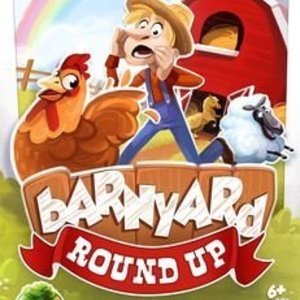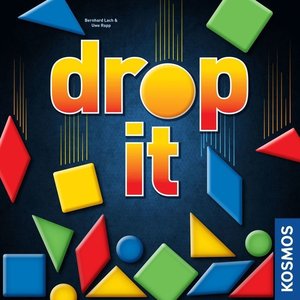
GuitarTuna – Tuner for Guitar, Bass and Ukulele
Music and Education
App
GuitarTuna is the easiest, fastest and most accurate tuner app in the world! The ultimate tuner for...
Kristy H (1252 KP) rated I'd Give Anything in Books
Jun 11, 2020
"In one night, one night, I lost all of them."
I adore Marisa de los Santos and her writing, though this wasn't my favorite of her books. Still, she's just so good at capturing the little moments in life: nailing down the feelings and emotions of her characters. Ginny, Avery, and others spring to life in this one. The story swings between past and present, with older excerpts often told from Ginny's diary entries. It takes a while to learn Ginny's big secret, which is a bit of a pet peeve of mine: I'm not always a fan of dragging out a secret.
This is a poignant and sad read, delving into marriage, love, and parenthood. My favorite character was fifteen-year-old Avery, who is hit hard by the incident involving her father, Harris. In many ways, I was far more invested in Avery's growth than Ginny's--I liked Ginny, but I couldn't quite find myself fully wanting to root for her. Although the juxtaposition between young Zinny and present-day Ginny was quite well-done.
Did you stop being your old selves? Did they fall away? Were you always only the self you were in the present?
The book explores how one secret can so change a person and the ripple effect it has on many lives. Ms. de los Santos examines her characters very closely via her writing, and I will always love picking up her books and getting an intimate look at her cast of players. In the end, this is a touching and well-written novel, even if I couldn't always find myself fully engaged in Ginny's world. 3.75 stars, rounded to 4 here.

Learning Money Australia
Games and Education
App
I Can Count Money Australia is an exciting & fun 8 games-in-1 money counting game for kids ages...

Flick Home Run !
Games and Entertainment
App
■ ■ ■ Appstore BEST of 2012 (PAID/GROSSING) ■ ■ ■ Flick your finger and make a...

Splendor™
Games
App
** ONLINE MULTIPLAYER NOW AVAILABLE !!! ** The OFFICIAL digital adaptation of the best-selling...
BoardGames BoardgameApps GreatGames
Purple Phoenix Games (2266 KP) rated Barnyard Roundup in Tabletop Games
Apr 12, 2021
Barnyard Roundup is a silly game of bluffing and hand management set on a farm. In it players are farmhands trying to help Farmer Brown sell the most animals at market. They do this by bluffing their hands in trade deals with other farmhands, thus making no friends in the process. The player with the most points at the end of the game, when all cards from the draw deck have been drawn, will be the winner!
DISCLAIMER: We were provided a copy of this game for the purposes of this review. This is a retail copy of the game, so what you see in these photos is exactly what would be received in your box. I do not intend to cover every single rule included in the rulebook, but will describe the overall game flow and major rule set so that our readers may get a sense of how the game plays. For more in depth rules, you may purchase a copy online or from your FLGS. -T
To setup place the five Animal Bonus cards in a line with the Set Bonus cards nearby. Shuffle the large deck of animal cards and deal out cards according to the rulebook per the number of players in the game. The Burglar and Excuse Me tokens are sorted and dealt out with the remainders face-down near the other cards. Remove eight cards from the draw deck and decide who will be the start player. The game may now begin!
Barnyard Roundup turns are quite simple: take two or three actions and end the turn. The first action is mandatory and it is Passing Cards to another player. Choose anywhere from one to six cards, place them face-down on the table in front of the player with whom to be traded, and announce the number and type of cards to be traded. For example, a player may say, “This is four chickens.” The targeted player now must decide whether that group actually IS a group of four chickens or if they believe the trader (not traitor) is bluffing. If so the targeted player may say, “That is NOT four chickens.” Once the agree/disagree statement has been made the cards are flipped over to see which player will be adding the cards to their pens. If the targeted player guessed correctly then they will received all the animal cards that were passed to them. That is, unless the cards were actually CROWS. Crows are worth -5 VP at the end of the game (see the photo below) and will be taken into the pen of the defeated player in the trade. In addition to crows (bad) the game includes Copy Cats (good) which can be wild cards to be placed with other animals and they copy the animal in their group. When the trade is resolved the active player may choose to perform the next step, but it is not mandatory.
Players must note that any time a player gains crows that would extend their collection of crows to any multiple of 3 that player must then draw another Action Token (Burglar, Excuse Me, Scarecrow) from the supply. If a Scarecrow is drawn it is immediately revealed and three crows are discarded from that player’s collection. The Excuse Me token may be used during a trade, but before cards are revealed, by a player not involved in the trade. When they announce, “Excuse Me,” they immediately take the place of the targeted player and will decide whether the trade is correct as announced or is a bluff.
Should they wish, the active player may now Play a Burglar Token from their collection in order to target another player and ask for all of their animals of a specific type – “I wish to procure all of your cows” That player must then immediately hand over all their cows, or else may tell the active player to Go Fish. Okay, that last part isn’t in the rules, but I started doing it and it stuck for me.
The third and final step of a turn is simply to Draw Cards and End Your Turn. Draw cards back up to the hand limit of 5 or 6 and end the turn. Play then passes to the next player.
Play continues in this fashion until the last card has been drawn. The game ends immediately and players tally their points per the rulebook to arrive at an ultimate winner!
Components. This game is a bunch of cards and some tokens in a double-wide+ tuckbox. I love the art, and that makes sense as it is illustrated by Lina Cossette, half of Mr. Cuddington. If you don’t know about Mr. Cuddington, please check out their website. The cards are good quality, as are the tokens. But that box. Now, it LOOKS great, and is a fine size. But a tuckbox? I would have preferred a lidded box, or even one of those with the magnetic fold-out lids. But it’s a tuckbox and the opening flap dented upon its first opening. Oy. I could give a chef’s kiss to everything else though.
Now, there’s a reason why I rated this game a 4 and my wife a 6: she beats me every single time we play and I just cannot find the strategy to take her down. Am I just horrible at bluffing games? Does she just dominate me at ALL games? I’m not sure, but this one certainly highlights the fact that she’s just better than me. I can still hear her haunting and taunting me with, “OH MY GOSH I LOVE THIS GAME! I’M SOOOOO GOOD AT IT!” Meanwhile I am sitting pretty with a whole flock of crows laughing at me like I am the Scarecrow from Wizard of Oz. Perhaps I am truly brainless as well.
That said, the game is enjoyable. I do like to play bluffing games, but I’m the poor soul who would rather play straight than do ANY sort of bluffing at all. Except when I have lulled my prey into trusting my every declaration. Then pull out the big guns and laugh my way to the bank. Well, I tried that several times and no dice. But I do enjoy playing, and I do keep coming back for more torture. And if that isn’t a sign of a good game, then what is?
All in all the game is quick, light on rules, and features wonderful art style. This is the game I will probably use to introduce my children (or new gamers) to bluffing games as the theme is easily digestible and when you get stuck with the negative points you don’t feel super bad about it. It is easy to pronounce that Purple Phoenix Games gives this one a squawkin’-good 10 / 12. If you are looking for a light introductory game to teach bluffing or to hit that sweet-spot, then I recommend you check out Barnyard Roundup from Druid City Games. I ain’t a-bluffin’ ya.
Purple Phoenix Games (2266 KP) rated Macaron in Tabletop Games
Oct 20, 2020
Macaron is a baked goods-themed trick-taking card game for one to five players. In it players are bakers in medieval France trying to become the favored royal baker to the king and his family. The player who can earn the most VP by delivering the tastiest macarons to the royal family will be victorious and will then bake the other players a box of macarons to take home (I added that last part, but Ta-Te Wu should consider adding it to the rules).
DISCLAIMER: We were provided a prototype copy of this game for the purposes of this review. These are preview copy components, and I know for sure the final components will be slightly different from these shown. Also, it is not my intention to detail every rule in the game, as there are just too many. You are invited to download the rulebook, back the game through the Kickstarter campaign, or through any retailers stocking it after fulfillment. -T
For this preview I am tackling the solo rule-set provided and my AI opponent is named Emma (per the rules). Multiplayer games will be played somewhat similarly, but against normal-intelligenced real people. Duh.
To setup a solo game, place the Score board in the middle of the table on whichever side is decided – one side allows up to 20 points, and the other up to 30. Place the first three Group boards (A with Almond and Pistachio, B with Strawberry and Blueberry, and C with just one Green Tea macaron upon it) somewhere near the Score board to denote the flavors being played. Remove all cards from the deck picturing Earl Grey and Chocolate flavored macarons. Shuffle the remaining macaron cards and deal the solo player 13 of them. Deal Emma one random card from the deck under each flavor on the Group board as shown below. These random cards will take on the flavor of whichever stack to which it now belongs. Continue dealing Emma eight cards to her stacks, but match them to their flavors – the 4 of Pistachio under Pistachio, etc. Emma should now have 13 cards in total, but each flavor stack should be shuffled and arranged as shown below. Choose a color for the player and for Emma, place one of each meeple on the Score board to track final scores, and the other meeples on the Gift Box tracker in the middle. Analyze each of Emma’s stacks to determine which Group contains the most cards. These flavors will be given the Royal token (I used the purple star) and are considered the trump suits this round. Flip over the top card of the deck that remains, and place the Allergen token (I used the tall goldenrod piece) upon the matching flavor. The game may now begin!
The solo player is always the starting player, so they will open the first trick by playing a card from hand. As in most card games, whichever flavor (suit) is led will need to be followed by Emma, if possible. The rulebook gives the player a nice turn-flow summary for Emma based on which player leads and which type of card is played.
As in Euchre, suit must be followed. If a player is unable to follow, they may play a Royal (trump) card to win the trick or any other non-Royal card. The Royal flavors are both flavors that belong to the same Group, or Green Tea, as it is its own Group. For each trick won, the player will advance their meeple on the Gift Box track to denote number of tricks won. Some card rules adjust the scoring. For example, should a value 1 card win the trick the winning player will increase their number of Gift Boxes three spaces instead of one. Should a trick include an Allergen flavor the winning player will still lead the next trick but will not advance their Gift Box meeple, as Allergens make the royal family sick. However, should a trick contain a value 2 card in it, the 2 cancels the Allergen and the winner may advance their Gift Box meeple as normal.
The round ends when a player, or Emma, has finished their hand of 13 cards played or reaches eight or more Gift Boxes (won tricks). Setup for a new round as the game was initially setup with dealing cards to each player and determining Royal and Allergen flavors. Play continues in this fashion until the player or Emma has reached the pre-determined score of 10, 20, or 30. The winner must now get to baking (again, I added that, but it REALLLLLY needs to happen, I think)!
Components. Again, this is a prototype copy of the game (though still pretty good) and the final components will certainly be different than the ones shown here. That said, the art style is simply wonderful and incredibly enjoyable. Yes, the Score board is a little busy, but it’s functional and fun. The art on the cards is very good, colorblind-friendly with icons in addition to colors, and the art doesn’t get in the way of playing tricks at all. All the other components used in the game will probably be different upon a successful Kickstarter campaign, and though I haven’t seen the proposed components, I am sure they will match the theme and be great to handle.
So as a lover of Euchre, am I also a lover of Macaron? ABSOLUTELY! It takes everything I enjoy about Euchre and somehow simplifies AND complexifies it. Teaching Euchre to new players can be a chore when they don’t latch onto the fact that the highest cards in the game are the Jacks of the same color of trump, but one is higher than the other. It can be awkward at first. Here, there are one or two flavors that are trump suits. It makes sense to be able to visualize a bit easier, and to be able to relate to flavors. In fact, my 4-year-old son wanted to “play” it earlier this morning, so I took out the Allergen mechanic and just did straight suit-following with trumps and he understood it. So, I guess by house-ruling a little you can also play this with children who are learning games for the first time, learning their numbers, or learning trick-taking games. That’s a fun hidden side quest!
Now, I can see how people will totally dig Macaron as a multiplayer game, but I am previewing this as a solo game. Is it just as good? Yep! I like being able to play the game whenever I want, and using another mechanic I didn’t describe earlier – Betting. Having to bet upon how many Gift Boxes you will score for the round adds another layer of analyzation I particularly enjoy. If you guess correctly you score an additional two Gift Boxes. If you’re wrong Emma scores two Boxes. Couple this with Emma’s unpredictable card play and you have an interesting AI player that you may never be able to “figure out” and beat methodically. I like that randomness from Emma. She has made a few games close, but ultimately has lost every game against me.
Macaron is a cute little Euchre-style card game that can be played well solo and multiplayer, and features wonderful style. I love the theme, and I seem to be attracted to food games; I love Bohnanza, Morels, Happy Salmon (my favorite fish to eat), Sushi Go!, Coconuts, and The Three Little Pigs (ok that one was mean, but hey, I love pork)! If you also enjoy food-related games, or trick-taking games, or just fun little card games you can play solo or with other people, please consider backing Macaron via their Kickstarter campaign launching soon. Tell them Purple Phoenix Games sent you and I will share my Gift Box of Macarons with you**. You will have to let me know your food allergies prior, though.
** I don’t actually have a Gift Box of Macarons. That was a lie, and I apologize for that.
Purple Phoenix Games (2266 KP) rated Drop It in Tabletop Games
Oct 22, 2019
Did you ever play Connect 4? Who am I kidding, of course you probably did. Drop It is essentially an abstract version of Connect 4. In Drop It, players take turns dropping their pieces into the slot board in an effort to amass the most points. Each player has a set number of pieces in their specific color, and in various shapes. The rules of Drop It are simple – pick a piece and drop it (roll credits) into the board. You earn points for the highest level that your piece crosses into, as well as bonus points for touching various smaller areas across the board. Sounds easy enough, right? Well here’s the tricky part. If your piece touches another one of your pieces, even if by just a hair, it earns you no points. Similarly, if your piece touches another piece of the same shape (regardless of color), you earn no points as well. AND on top of that, certain areas along the bottom and sides of the board are colored and are not allowed to be touched by their corresponding colored pieces. If a piece touches one of those forbidden zones, then that player earns (you guessed it) no points. So all in all, not as simple a game as it looks, is it? The player at the end of the game with the most points is the winner!
Man, Drop It is a neat little game. When I first heard of it, I thought it would be the easiest game on the planet. But boy oh boy was I wrong. Although I’d say this game is primarily one of dexterity (and luck), there is definitely quite a bit of strategy involved. Because there are several placement restrictions, you have to be careful about which pieces you play at what times. The circles roll around on pretty much anything, so do you risk dropping one when it might just roll onto your square and negate those points? Can you drop your trapezoid at the right angle to have it span two other pieces and miss landing on yours in the middle? All while making sure it doesn’t hit the left side of the board here? It is way more strategic than meets the eye, and I love that. It keeps me engaged the entire game, and it elevates the game to a higher level than just simple dexterity.
Whatever strategy you choose must involve your opponents as well. Even though there is no real player interaction in Drop It, you’ve got to keep an eye on your opponents and which pieces they play at what times. If another player just dropped their square right in the middle of the board, you probably should not drop your square right now. Unless you don’t want points. Then by all means, drop your square right on top of that sucker. Are you able to keep a variety of shapes throughout the game, or will you get cornered for several turns because all you have left are your circles? You’re not only thinking of your strategy, but that of your opponents as well.
One other thing that I love about Drop It is that once a piece is scored, it is out of your mind. What I mean is that in some cases, dropping a piece causes those underneath to shift. You only score the piece that was just dropped – regardless of how it moved any pieces underneath. That definitely helps to keep the game moving because you are not having to constantly go back and re-score any shifted pieces. That would just be brutal.
Overall, I really like Drop It. It’s not one that I personally own, but it definitely is on my Wish List after having played it. It’s the perfect little filler game for in-between some meatier games. Although it requires strategy, the dexterity aspect of the game makes it more light-hearted, fun, and fast to play! Purple Phoenix Games is dropping a score of 14 / 18 for this little gem.

Super Mario Run
Games
App Watch
A new kind of Mario game that you can play with one hand. Super Mario Run has received some big...
Purple Phoenix Games (2266 KP) rated Strife: Legacy of the Eternals in Tabletop Games
Jun 12, 2019
War rages across the land as the Eternals (immortal beings) fight each other for dominance over the realm. Calling forth their chosen Champions, battle after battle is fought until one Eternal emerges victorious. Will your Champions aid you on your quest for supremacy, or will you be forced to cede to another Eternal in the end? Choose your Champions wisely, and may your legacy and power reign supreme!
Strife: Legacy of the Eternals is a competitive two-player game of perfect information – each player has an identical hand of 10 cards from which to play. At its core, Strife is like War – players simultaneously reveal their chosen card and the highest number wins that battle. Players earn Victory Points for battles won. But there’s a twist. Each card has a unique ability (Battle Ability) that, when played, can influence the total power of either your or your opponent’s card for the given turn. And that’s not all – each card also has a secondary ability (Legacy Ability) that can be used the turn after it was initially played to also influence the total power for that next turn. Strategy is key! How can you play your cards in a way that both the initial and secondary powers can benefit you? One power is immediate and one is delayed by a turn, so think carefully about how to best combo your cards/powers! Don’t forget, as a game of perfect information you also know exactly what your opponent is working with too! Use your deduction skills to determine which card they might play and figure out how to use your remaining cards to undermine their total power. The game is played over the course of 3 rounds, and the player with the most Victory Points at the end is the winner!
For a game that seems so simple, Strife actually has a steep learning curve. Every card in your hand has a unique Battle Ability AND Legacy Ability that you have to learn to successfully play. You can’t just pick this game up and play if you don’t know the powers and understand how they work. It might be a little easier to learn if there was a player reference guide for all of the powers so you could just look in one place, but there isn’t one. So I’m left flipping through all of my cards trying to find a power that I thought I saw that could maybe combo with a power on a different card. The rule sheet suggests using ONLY Legacy Abilities your first game to get a feel for the flow, which I appreciate. But when you finally add in the Battle Abilities, you have to be paying attention to 2 different powers on 2 different cards each turn and it can be confusing if you don’t fully know all of those powers.
That being said, I think this game would be great if it used ONLY a Battle Ability or ONLY a Legacy Ability. Having both just feels like too much to me. Until you understand all of the abilities, it’s hard to decide on a strategy since you don’t really know how certain powers will work with each other across different cards. I have played this game multiple times, but since I don’t play 2-player only games often, I haven’t had the opportunity to totally learn all of the powers. And if you play with someone that has never played Strife before, it feels a little unfair if YOU know the abilities and how they work while your opponent is totally in the dark. It would be a much easier game to grasp if there was only 1 power on 1 card to consider for each turn.
I got Strife from Travis when he was doing a small purge of his collection, and I can see why he was getting rid of it. It’s a part of my collection, but I can’t guarantee how long it’ll stay there. In theory, it’s a cool game. But in actual execution, it’s just a little too complicated for what I feel it should be. Give Strife a try if you want, but I don’t really think you’re missing much if you don’t. That’s why Purple Phoenix Games gives Strife a 4/12.
https://purplephoenixgames.wordpress.com/2019/03/20/strife-legacy-of-the-eternals-review/




